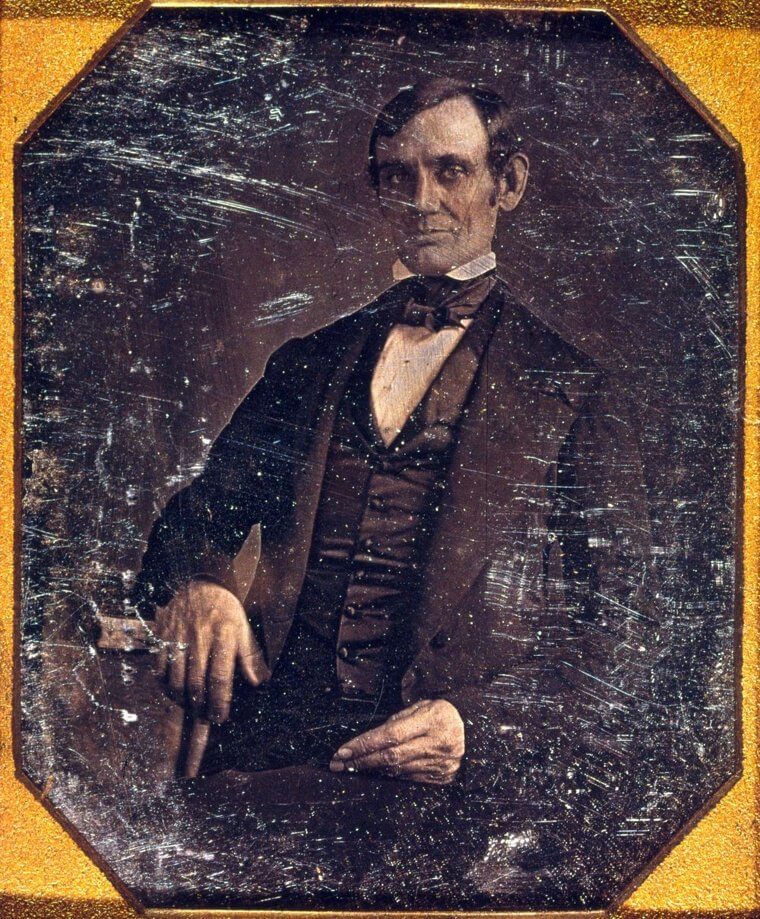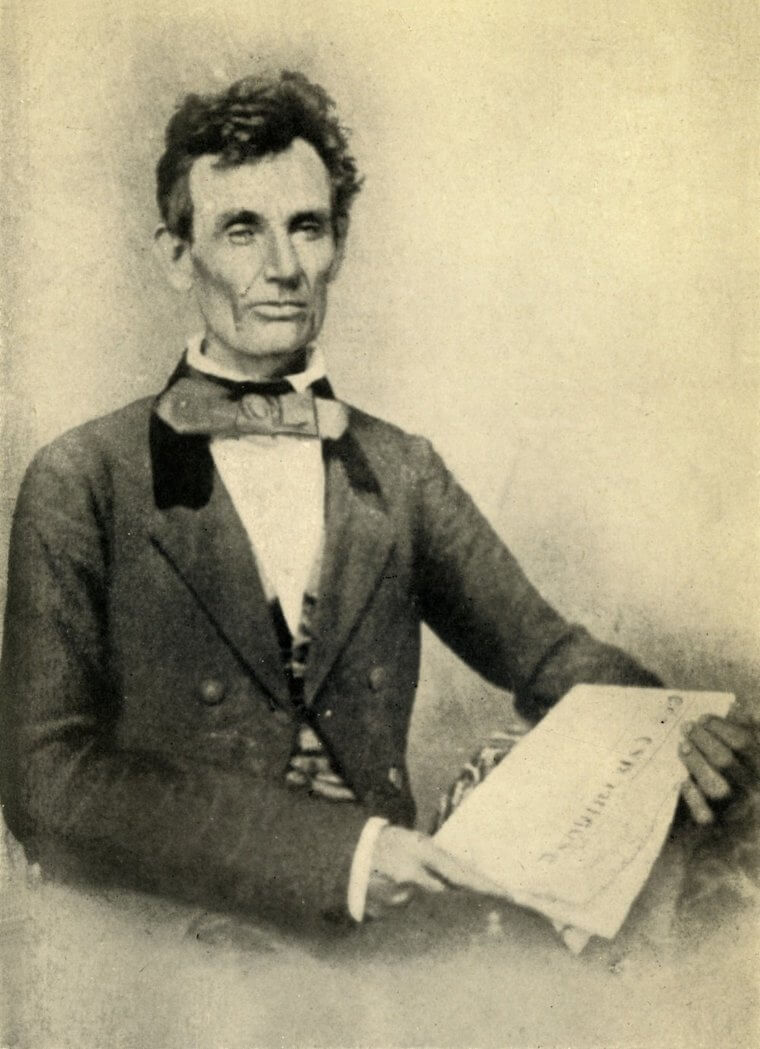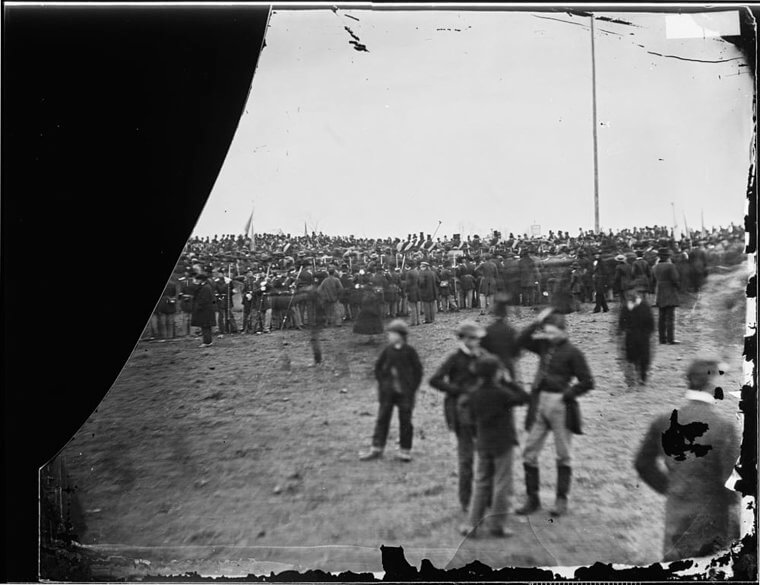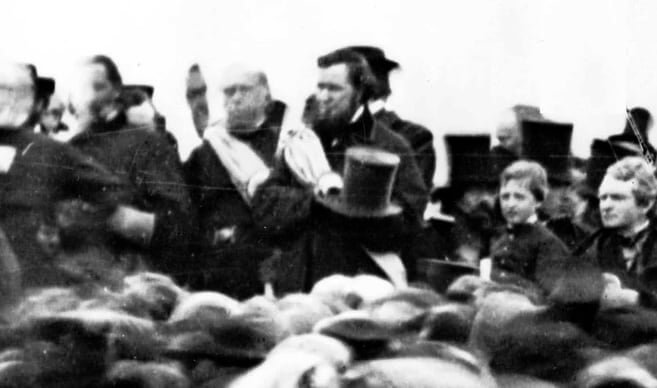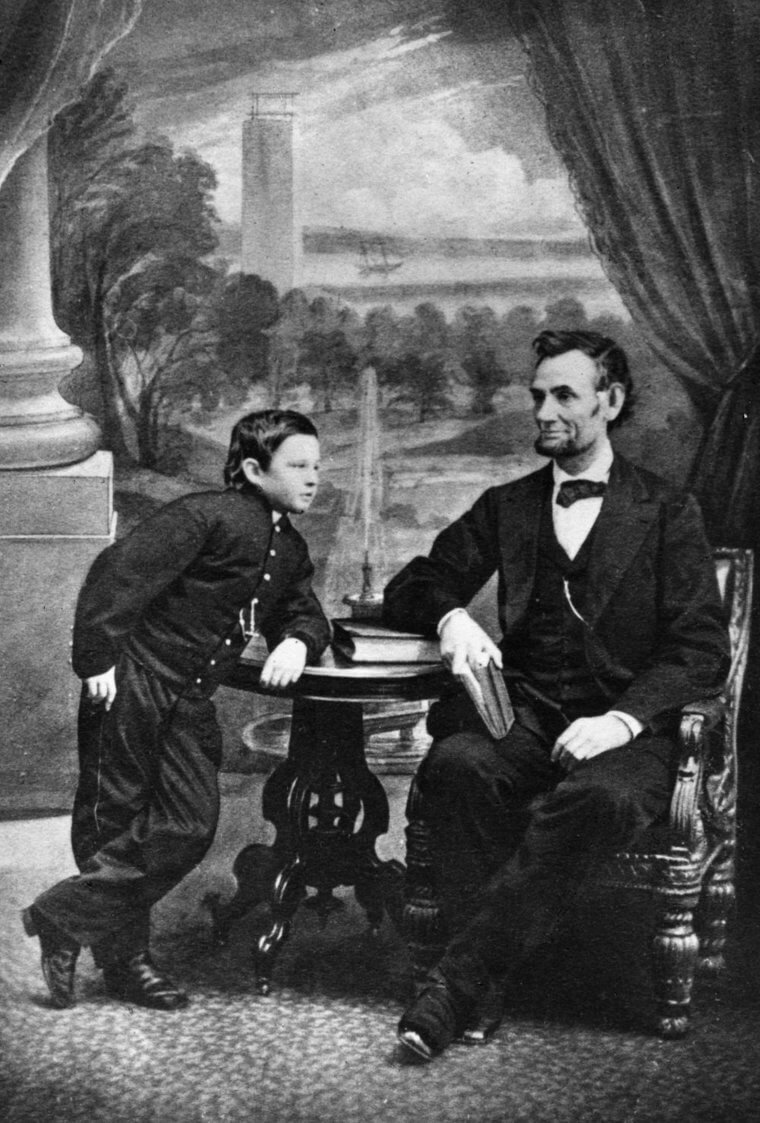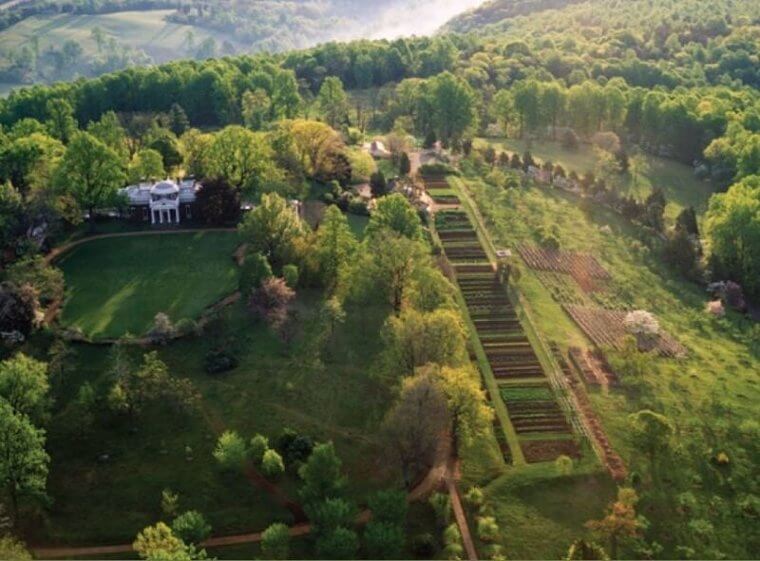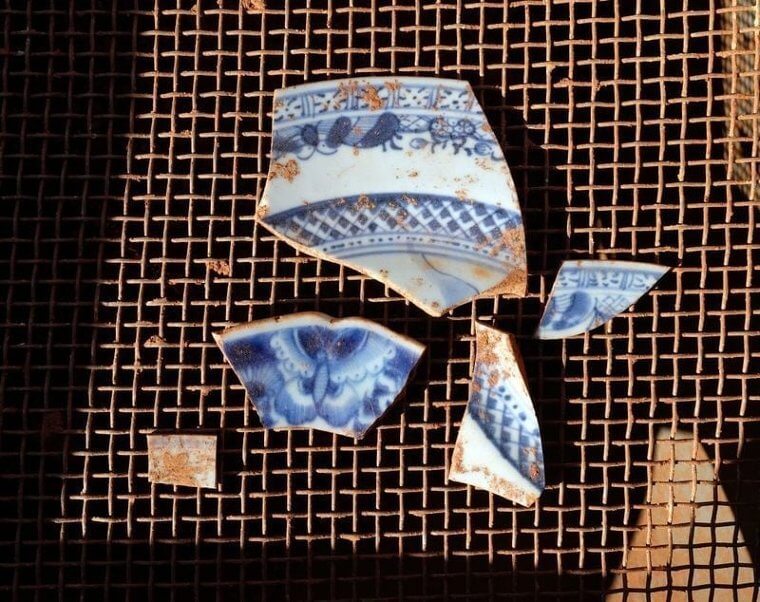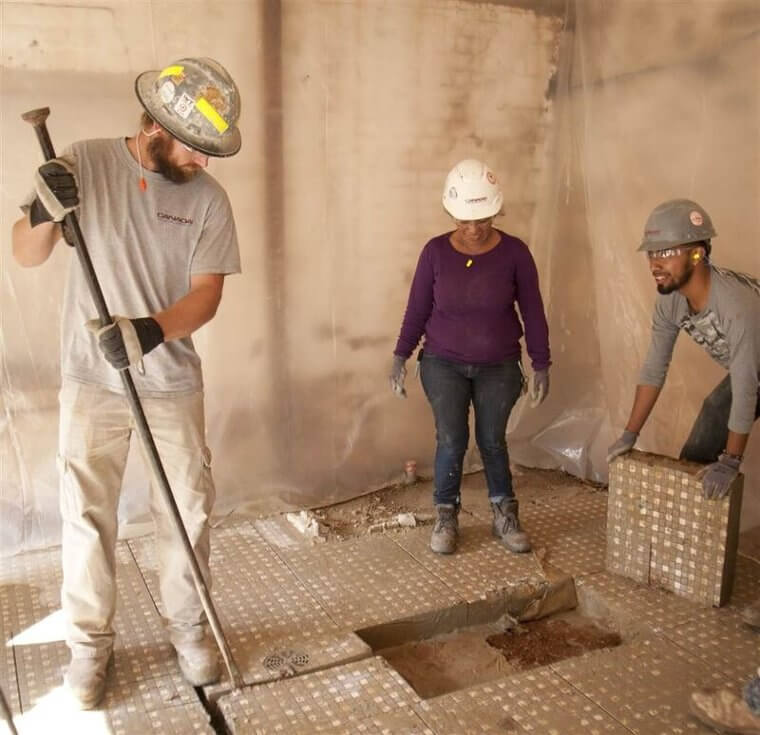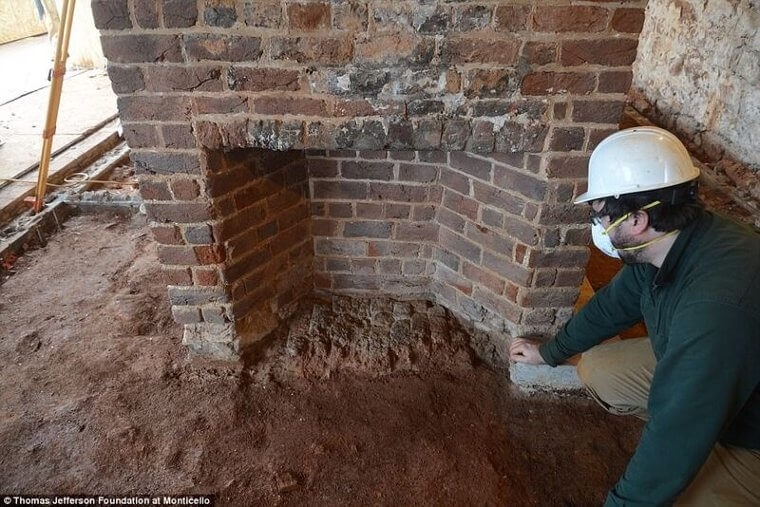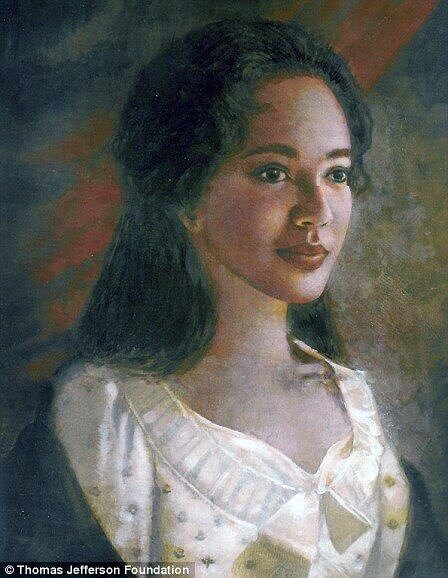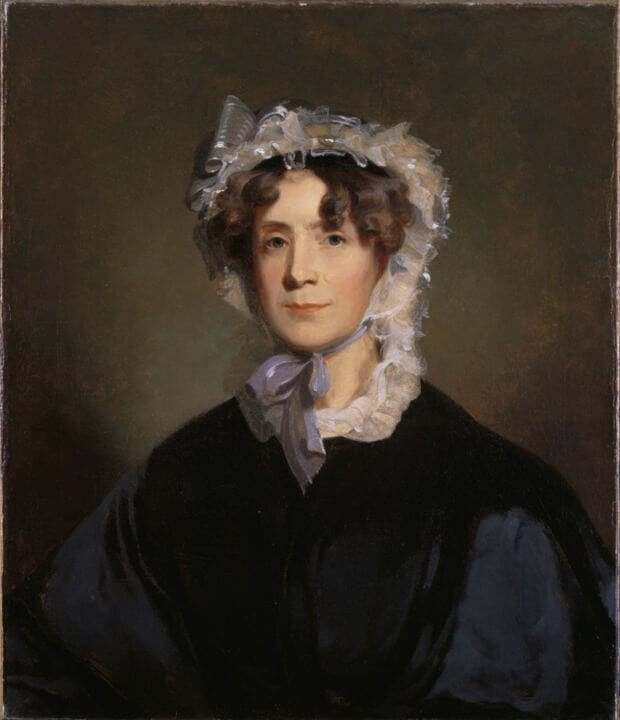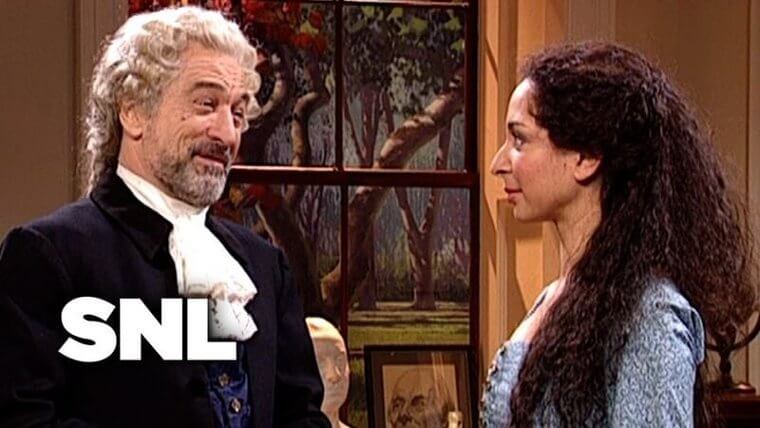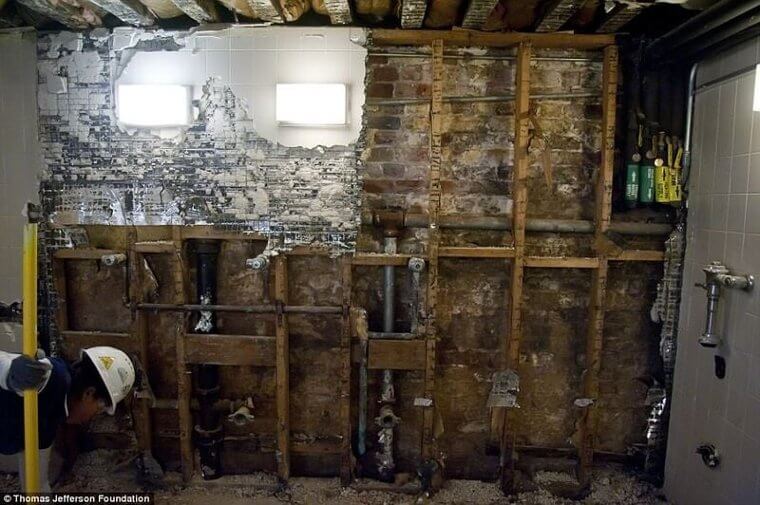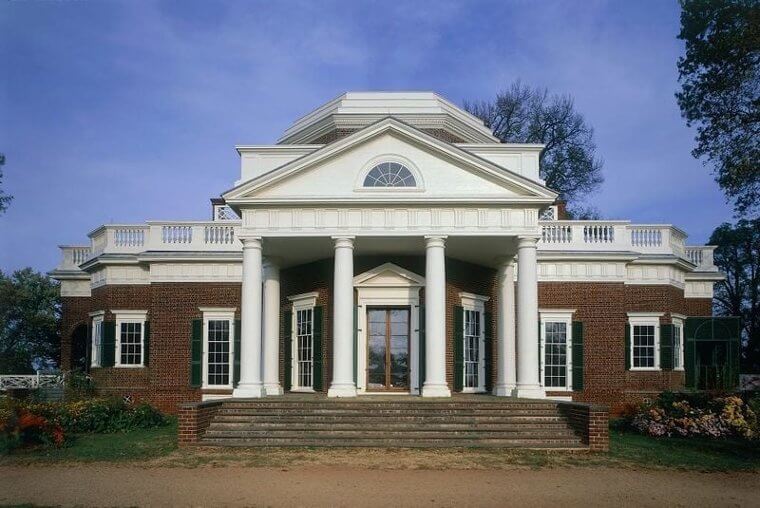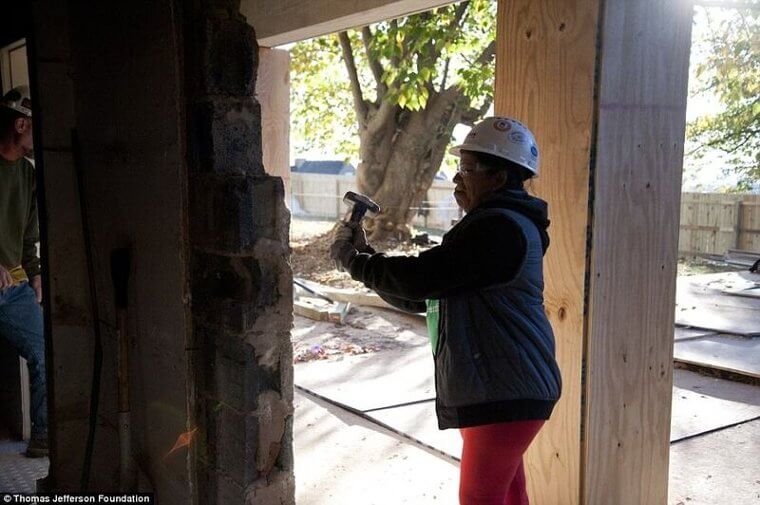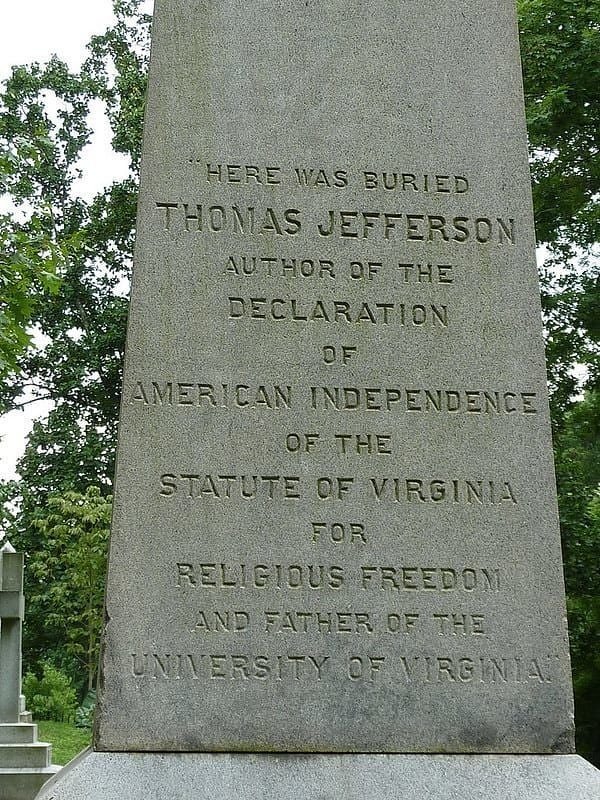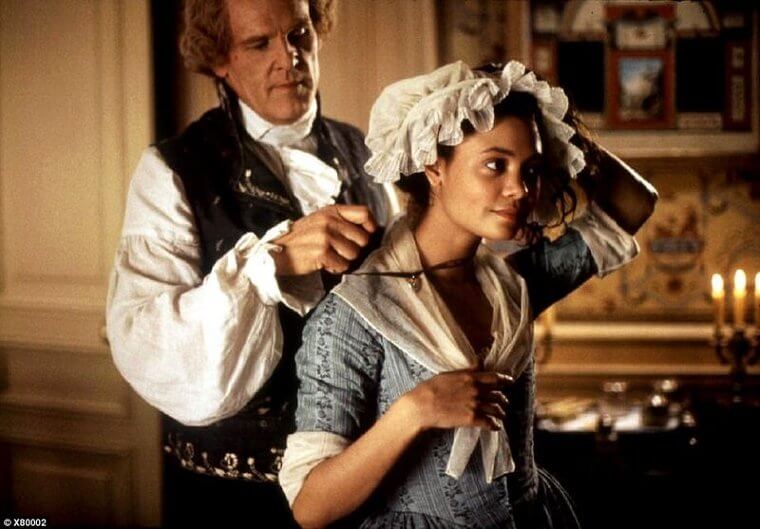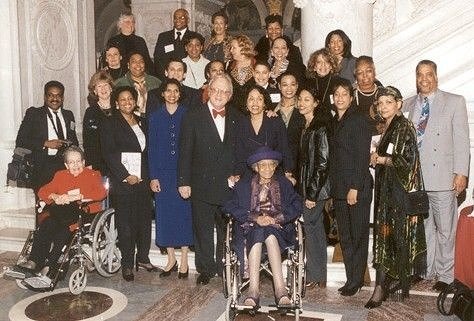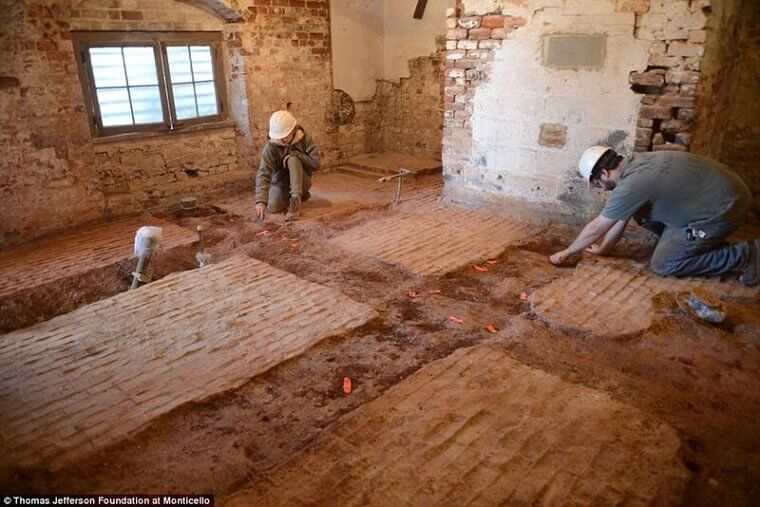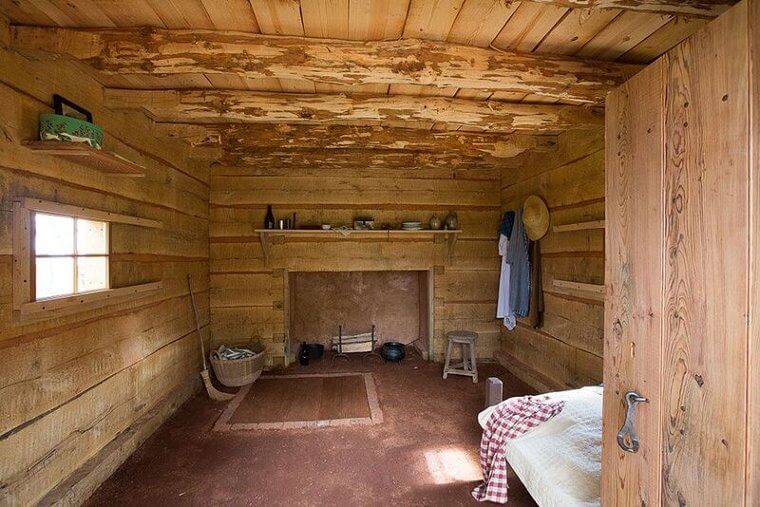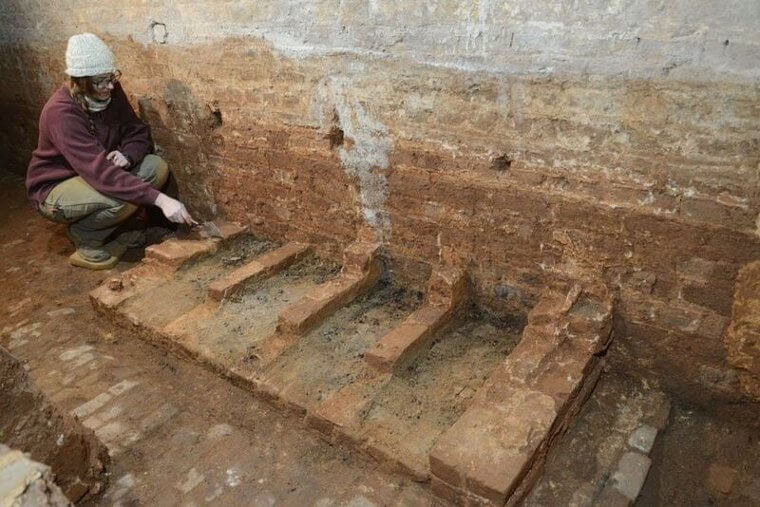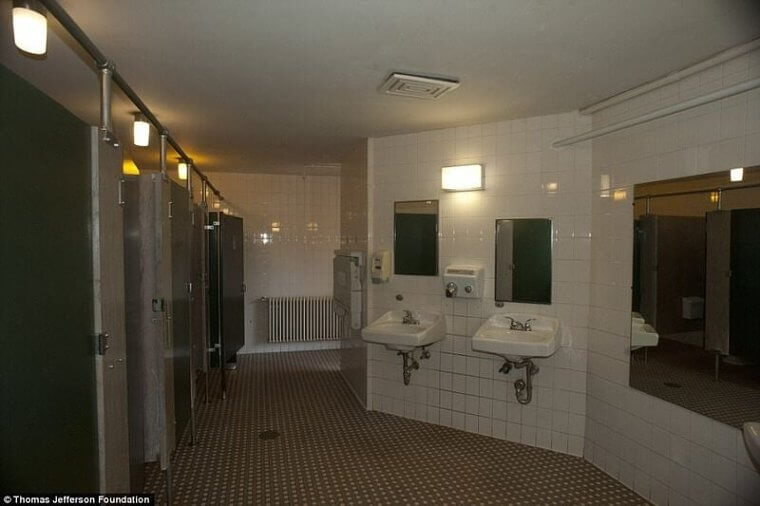Who hasn’t heard about Abraham Lincoln? Whether it was in school, on TV, or in a history book, everyone seems to know the story of The Great Emancipator. If you ask anyone on the street they could tell you a fact or two about Honest Abe, but they would be surprised to learn about these never before seen, pictures of him.
These incredible photographs that have been recently released after being found in the National Archives show America’s favorite president in a whole new light. They have been made public in honor of Lincoln’s 210th birthday and are absolutely breathtaking! Read on to explore the concealed life of Abraham Lincoln, from his less-than-perfect hair day to his most treasured photograph.
These incredible photographs that have been recently released after being found in the National Archives show America’s favorite president in a whole new light. They have been made public in honor of Lincoln’s 210th birthday and are absolutely breathtaking! Read on to explore the concealed life of Abraham Lincoln, from his less-than-perfect hair day to his most treasured photograph.
Abraham Lincoln’s First Ever Picture
Lincoln started his political career in 1834 at the age of 25, when he secured a seat in the Illinois legislature. By that time he had already made a name for himself as a self-taught lawyer. His nickname “Honest Abe” actually came long before he even started practicing law. He got the nickname when he was younger working as a store clerk. There was once a situation when he walked three miles to give back just six cents to a customer who had overpaid.
This photo was taken in Springfield, Illinois in 1846 by photographer Nicholas H. Shepard. Historians claim that this was not only the first photo of his political career but also the first photograph of Lincoln ever taken. It was shot right after he had earned his seat in the United States Congress.
This first job in politics wasn’t a big success, however, evident by the fact that he only kept his position as the representative of Illinois’s 7th District for one term. The reason behind his lack of popularity was his firm stance against the Mexican-American War, which was declared several months prior to his first election into Congress.
The War started on April 25, 1846, and lasted until February 2, 1848. At the time, it was the first U.S. armed conflict which was fought on foreign soil. Then-President James. K. Polk wanted to expand the U.S. borders to gain more Mexican territory. He believed the United States had a “manifest destiny” to spread across the continent to the Pacific Ocean. In the end, the United States won the war with Mexico ceding huge pieces of land by signing the Treaty of Guadalupe Hidalgo in 1848. These portions of land would later become the states of California, Nevada, Arizona, New Mexico, Utah, Wyoming, and Colorado.
This first job in politics wasn’t a big success, however, evident by the fact that he only kept his position as the representative of Illinois’s 7th District for one term. The reason behind his lack of popularity was his firm stance against the Mexican-American War, which was declared several months prior to his first election into Congress.
The War started on April 25, 1846, and lasted until February 2, 1848. At the time, it was the first U.S. armed conflict which was fought on foreign soil. Then-President James. K. Polk wanted to expand the U.S. borders to gain more Mexican territory. He believed the United States had a “manifest destiny” to spread across the continent to the Pacific Ocean. In the end, the United States won the war with Mexico ceding huge pieces of land by signing the Treaty of Guadalupe Hidalgo in 1848. These portions of land would later become the states of California, Nevada, Arizona, New Mexico, Utah, Wyoming, and Colorado.
Fights Over Slavery, And Lady Loves?
When Abraham Lincoln returned to politics in 1854, he did so for an admirable reason. It was in the years following the passage of the Kansas-Nebraska Act, allowing the citizens of the Kansas and Nebraska to vote for themselves on whether or not they wanted to allow slavery in their territory. Lincoln was always known for his strong opinion against the spread of slavery into the new territories, and had made it his mission to have it stopped.
One of the things Lincoln had to do to get elected--so that he could fight for the abolition of slavery in the territories--was to debate his rival. On August 21, 1858 Abraham Lincoln and his adversary Democrat Stephen Douglas had their first of seven historic debates, which concentrated solely on the outlook of slavery in the United States.
Lincoln and Douglas had never gotten along, and not just when it came to American politics. It appeared that the two rivals were also each other’s fierce competition in the romantic sphere. They both harbored the same love interest, a beautiful Kentucky Belle named Mary Todd. Douglas soon learned that he was no match for the kind-hearted and good-looking Lincoln, who won Mary’s heart in no time.
This picture was taken in 1854 by photographer J.C.F. Polycarpus von Schneidau. By that time, Lincoln and Todd were already married for twelve years and had four sons together; Robert Todd (1843–1926), Edward Baker (1846–1850), William Wallace (1850–1862) and Thomas (1853–1871).
Lincoln and Douglas had never gotten along, and not just when it came to American politics. It appeared that the two rivals were also each other’s fierce competition in the romantic sphere. They both harbored the same love interest, a beautiful Kentucky Belle named Mary Todd. Douglas soon learned that he was no match for the kind-hearted and good-looking Lincoln, who won Mary’s heart in no time.
This picture was taken in 1854 by photographer J.C.F. Polycarpus von Schneidau. By that time, Lincoln and Todd were already married for twelve years and had four sons together; Robert Todd (1843–1926), Edward Baker (1846–1850), William Wallace (1850–1862) and Thomas (1853–1871).
Abe’s Bad Hair Day
He might have been one of America’s most beloved presidents of all time, but even the great Abraham Lincoln had bad hair days every once in a while. Maybe that is why he started wearing that top hat. When the president, remembered for his great sense of humor and wit, had his photo taken by Alexander Hesler, he kept messing up his hair every time the photographer tried to carefully put his locks back into place.

The president was known to be somewhat of a clown. Many people who crossed paths with him can confirm that he liked to crack a joke every now and then. One of his coworkers once said about his sense of humor,
“Mr. Lincoln abounded in anecdotes, of which he seemed to possess an inexhaustible fun. His stories, though rude, were full of wit. He generally laughed as loudly as others at his own witticisms, and provoked laughter as much by the quizzical expression of his homely features.”
“Mr. Lincoln abounded in anecdotes, of which he seemed to possess an inexhaustible fun. His stories, though rude, were full of wit. He generally laughed as loudly as others at his own witticisms, and provoked laughter as much by the quizzical expression of his homely features.”
New Hair, New Speech
Here is a not-so-happy-looking Abraham Lincoln in 1858. It’s not his new haircut that gave him such a stern appearance for the camera, but his heart that sat heavy in anticipation of the day to come while the photographer, Preston Butler, said “Cheese!”. After three years of fighting and working hard, Lincoln had finally gotten nominated to become the Senator of Illinois. He prepared a noteworthy speech, intended to sway the public to vote for him. The powerful words, which he spoke on June 16, 1858, forever embedding himself into history.
“A house divided against itself cannot stand”
“A house divided against itself cannot stand”
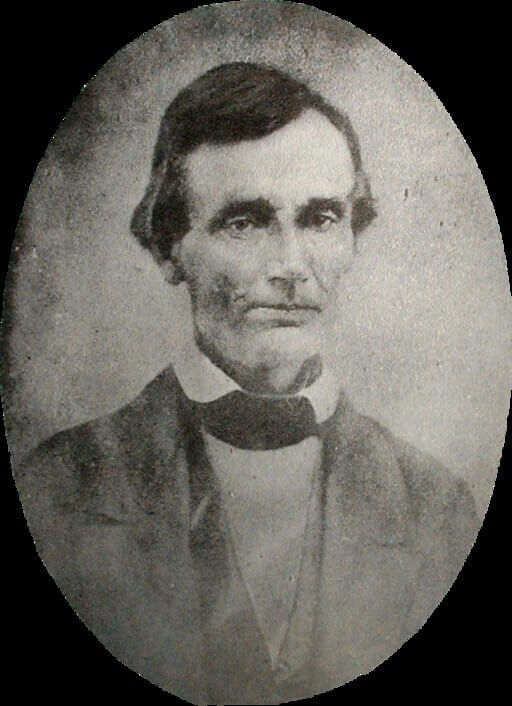
To this day, his words are recalled often, and have become a popular quote remembered in difficult times. Unfortunately for Lincoln, his words didn’t have as much impact on the day of the speech as they did in the decades that followed, because he lost the election to his old opponent Stephen Douglas.
Growing A Beard for Popularity
After this Congressional loss, Lincoln wanted to do everything he could to win the election for the presidency. So in 1860 when he received a letter from an 11-year-old girl providing him some very wise political advice, he didn’t hesitate to follow it.
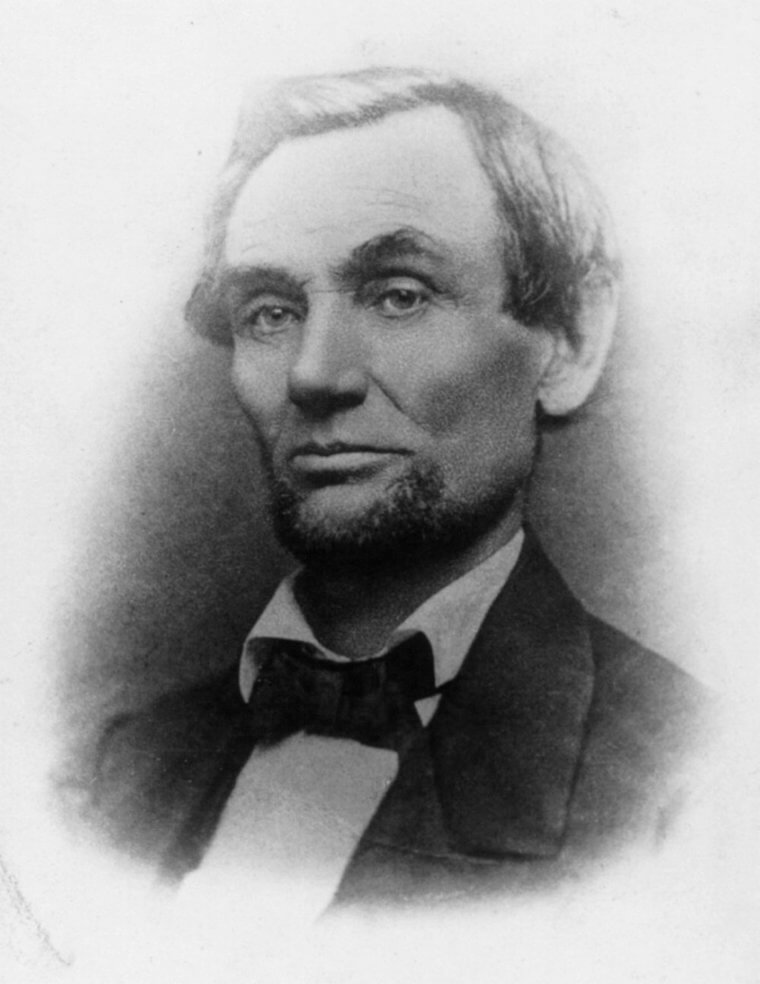
The little girl, named Grace Bedell, suggested the presidential candidate grow a beard. According to this pre-teen genius, it would get him more votes because it would hide his severe-looking lean face. In addition, it would attract more women because, “all the ladies like whiskers and they would tease their husbands to vote for you and then you would be President”
Lincoln’s Most Valuable Photo In The World
A few months later Lincoln’s beard had grown significantly and he decided to write little miss Bedell a letter back. He asked,
“As to the whiskers, having never worn any, do you not think people would call it a piece of silly affectation if I were to begin it now?”
“As to the whiskers, having never worn any, do you not think people would call it a piece of silly affectation if I were to begin it now?”
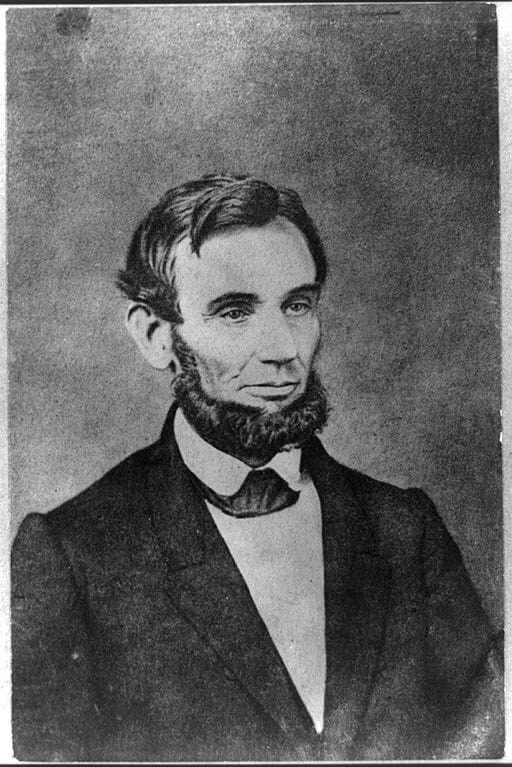
It was everything but silly, because after this picture was taken in 1861 it became one of the most famous photographs of Lincoln. It is now the most valuable photo out there of his likeness, and was auctioned off for over $200,000 in 2009.
I Spy With My “Lincoln” Eye
Even though there are probably dozens of photos of Lincoln taken in the past, it’s incredibly hard to find him in them. Take this picture below, for instance. Can you spot the president?
Don’t worry if you can't find him--it took researchers about 150 years to do so. It was a former Disney animator, named Charles Oakley, who discovered Lincoln in this very rare, blurry photograph that was taken on November 19th, 1863. In it, you can see a dense crowd there to listen to the Gettysburg Address, almost 156 years ago.
The Gettysburg Address was a landmark speech on November 19, 1863 in which Lincoln celebrated the victory of the Union army over the Confederacy four months after the Battle of Gettysburg. He detailed his plans for what direction to take the young country in, making it one of the most important speeches in American history.
The Gettysburg Address was a landmark speech on November 19, 1863 in which Lincoln celebrated the victory of the Union army over the Confederacy four months after the Battle of Gettysburg. He detailed his plans for what direction to take the young country in, making it one of the most important speeches in American history.
Diamond in the Rough
As you can imagine, it wasn’t easy to find Lincoln in this picture. After Oakley magnified the picture and used facial recognition technology on it, he soon recognized Lincoln’s Secretary of State, William Seward, and remembered all the stories about him standing right next to the President during his speeches. After this great find, it still took Oakley a while before he noticed a man with a familiar beard and a stovepipe hat on his head standing next to Seward in the picture. It was him!
This unique picture almost didn’t get a chance to get taken, because there wasn’t much time to capture it in the moment. The Gettysburg Address, as impactful as it was, only lasted for two minutes and there was only one cameraman present!
Another Image At The Gettysburg Address
There was also one other picture of the Gettysburg Address found at the National Archives. In it you see Lincoln giving his speech directly to the people gathered around him.
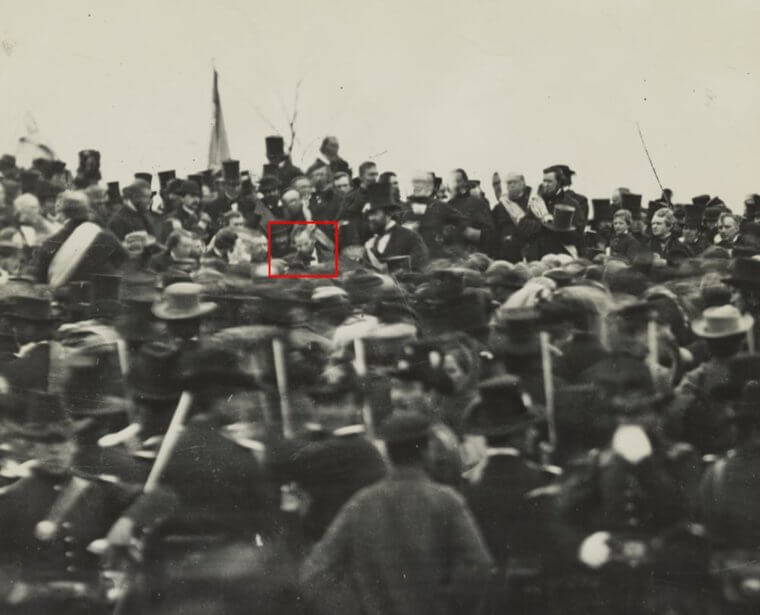
It is said that the President used to have an unusual way of preparing for speaking events. As a busy man, in the little time he had to write speeches he just scribbled short ideas on a scrap of paper which he brought with him on the actual day. According to historians, at the Gettysburg Address Lincoln just picked a few of his scribbled thoughts out and made it into a speech on the spot. He didn’t think much of the impactful speech he gave, but at his funeral Senator Charles Sumner said, “The battle itself was less important than the speech.”
The Presidential Campaign
In 1864, when Lincoln needed his picture taken for his upcoming presidential re-election campaign, he hired photographer Matthew Brady to take it. Lincoln ran against his former top-Civil-War-general-turned-Democratic-candidate, George B. McClellan.
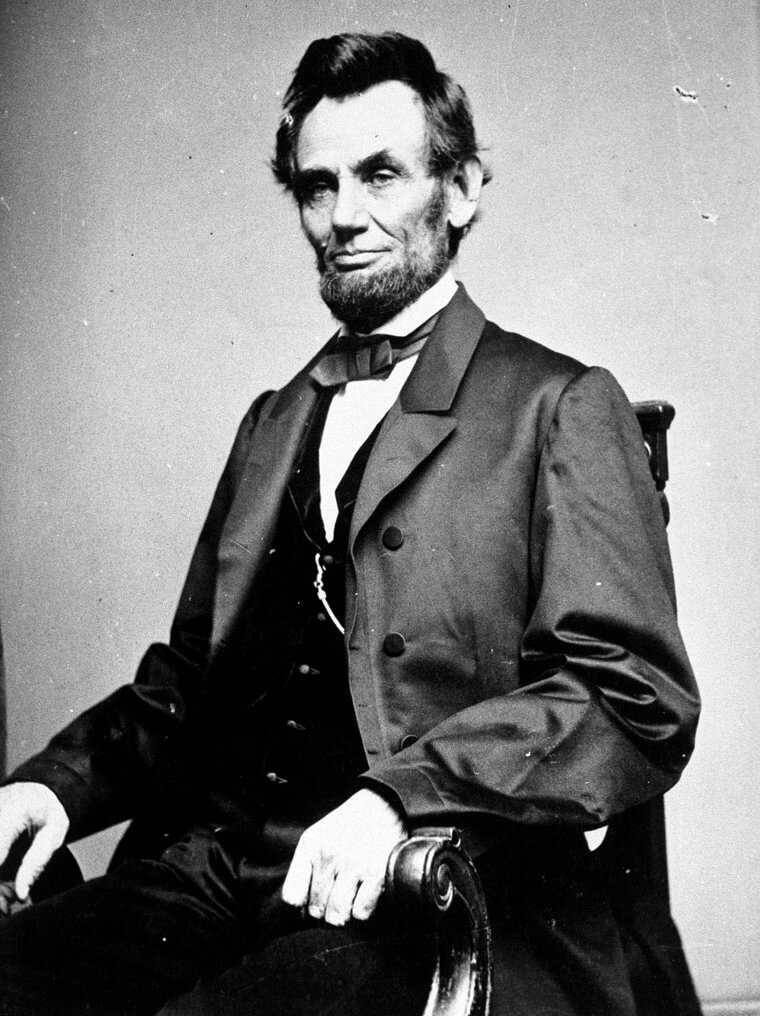
On November 8, after all the votes were in, the results showed that with over 400,000 popular votes, Lincoln had the electoral majority and therefore won the re-election. One of the reasons for this victory was the fall of Atlanta on September 1, 1865, when Confederate forces had finally surrendered to Union forces.
It was also the first time in history that several states allowed their citizens, who were serving as soldiers in the field, to cast ballots. It was these Army soldiers who helped to give Lincoln more than 70 percent of the vote.
It was also the first time in history that several states allowed their citizens, who were serving as soldiers in the field, to cast ballots. It was these Army soldiers who helped to give Lincoln more than 70 percent of the vote.
Like Father, Like Son
If people didn’t know yet that Abraham Lincoln trusted photographer Alexander Gardner to capture his more intimate moments, then this photo says it all. Gardner had the honor of capturing the president on film on seven different occasions, one of which was while Abe was spending time with one of his sons, Thomas, in February of 1865.
Thomas -- who earned the nickname “Tad” because as a baby he was “as wiggly as a tadpole”-- was one of Lincoln’s four sons. His other three sons were named Robert, Eddie, and Willie. Even though Lincoln was assassinated in 1865, he only had two sons who outlived him. Eddie passed away in 1850 and Willie in 1862, while he was still alive. Little Tad outlived his father but only by six years; he passed away in 1871 as a result of heart failure.
The Last Photo of Lincoln. Or Was It?
When it comes to Abraham Lincoln’s last picture, the opinions are still very divided. Some people thought that Lincoln’s very last picture was taken by Alexander Gardner on April 9, 1865, while others are totally convinced that the photo was actually taken in February of that same year. For decades the photo pictured below was considered one of the last while the President was alive. If it was taken on the 9th of April, that would have been only five days before his assassination by John Wilkes Booth.
On April 14, 1865, at the Ford's Theatre in Washington D.C., Abraham Lincoln was brutally shot in the head while attending the play “Our American Cousin”. The assassination was part of a much larger conspiracy, perpetrated by well-known stage actor John Wilkes Booth, with help from several accomplices.
On April 14, 1865, at the Ford's Theatre in Washington D.C., Abraham Lincoln was brutally shot in the head while attending the play “Our American Cousin”. The assassination was part of a much larger conspiracy, perpetrated by well-known stage actor John Wilkes Booth, with help from several accomplices.

During the assassination of Abraham Lincoln, Booth fell from the balcony and broke his leg. However, it didn’t stop him from fleeing the crime scene. In the alley next to the building, he mounted a horse and disappeared. Later he was joined by a large network of conspirators. They helped conceal his escape from the Union soldiers, who were on the hunt for the killer of America’s beloved president. It took one thousand soldiers and twelve days before Booth was found in a tobacco barn on a farm in Virginia.
On April 26, 1865, the Union soldiers were led to the barn, and after Booth signaled that he was ready to fight back, the soldiers set the barn on fire. Booth managed to emerge from the burning barn but was shot in the neck as soon as he exited. The hunt for Abraham Lincoln’s killer turned out to be one of the biggest manhunts in the history of the United States.
Booth was a native of the state of Maryland, where slavery was still partially permitted before the Civil War. He hated everyone who thought it should be abolished and thought they were trying to sabotage and destroy the country he loved so much. Therefore, Booth wanted to breathe new life into the Confederate cause by getting rid of the three most important officials of the United States government: Secretary of State William H. Seward, Vice President Andrew Johnson, and of course, President Abraham Lincoln. Seward emerged wounded but victorious, while Johnson’s attacker got cold feet and didn't execute the attack on the Vice President.
On April 26, 1865, the Union soldiers were led to the barn, and after Booth signaled that he was ready to fight back, the soldiers set the barn on fire. Booth managed to emerge from the burning barn but was shot in the neck as soon as he exited. The hunt for Abraham Lincoln’s killer turned out to be one of the biggest manhunts in the history of the United States.
Booth was a native of the state of Maryland, where slavery was still partially permitted before the Civil War. He hated everyone who thought it should be abolished and thought they were trying to sabotage and destroy the country he loved so much. Therefore, Booth wanted to breathe new life into the Confederate cause by getting rid of the three most important officials of the United States government: Secretary of State William H. Seward, Vice President Andrew Johnson, and of course, President Abraham Lincoln. Seward emerged wounded but victorious, while Johnson’s attacker got cold feet and didn't execute the attack on the Vice President.
One Last Sad Goodbye
It wasn’t until years later that people realized that there was another picture which would later be considered the actual last picture of the President. In 1894 this picture was published, and was proven to be the actual last picture of a living Abe Lincoln.
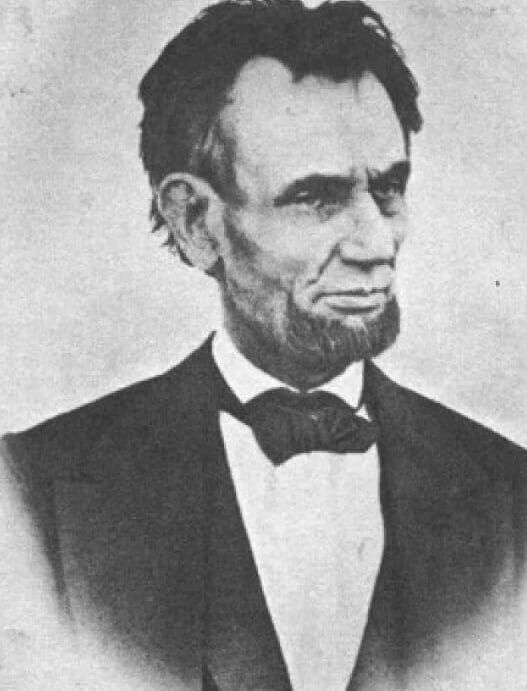
This picture was taken only four days before Lincoln’s death on April 10, 1865. According to Lincoln's personal secretary, John G. Nicolay, and his Assistant Secretary, John Hay, the picture was not taken by Alexander Gardner, but by another photographer called Henry F. Warren. It supposedly was taken on the south veranda of the White House, on the second war-free day, one of the five days Lincoln was able to enjoy before his untimely death, the day after Robert E. Lee surrendered at Appomattox Courthouse.
If you look at Lincoln’s pictures, you’ll notice that he didn’t smile a lot. In some of them you can spot the tiniest of grins but most of the time he had a more somber and drawn expression on his face. Walt Whitman, who was an American poet, essayist, and journalist in Lincoln's time, once described his look and facial expression as“a deep latent sadness.” This last picture is no exception. It’s almost as if Lincoln knew that his days were numbered.
If you look at Lincoln’s pictures, you’ll notice that he didn’t smile a lot. In some of them you can spot the tiniest of grins but most of the time he had a more somber and drawn expression on his face. Walt Whitman, who was an American poet, essayist, and journalist in Lincoln's time, once described his look and facial expression as“a deep latent sadness.” This last picture is no exception. It’s almost as if Lincoln knew that his days were numbered.
The Three-Week Funeral
One of the events that photographer Alexander Gardner was hired to take pictures at was Lincoln’s funeral. While the nation was still in great shock and trying to deal with the loss of their beloved president, Alexander had a difficult task to complete. He was asked to take pictures at President Lincoln’s funeral procession. It was held on April 19, 1865, down Pennsylvania Ave in Washington, D.C., where his body was kept for a week before it was brought to Springfield, Illinois for his actual burial.
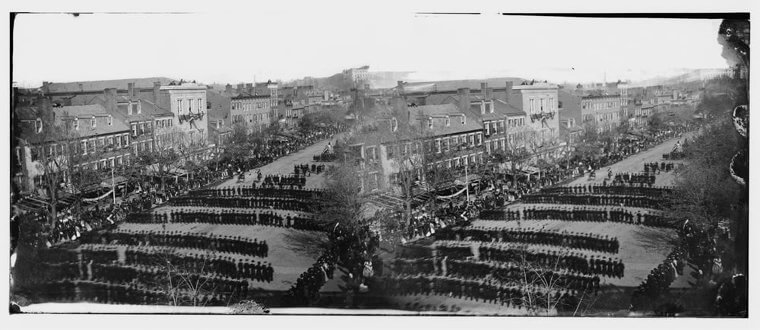
This picture is one of the photos that Gardner took on that day. It consists of what appears to be two photographs of the procession. It’s a technique that photographers from that era used to create special effects in a picture. This technique was called “stereoplate” and was done by placing two pictures side by side, about the distance between your two eyes, and then on top of each other to create more depth.
On The Train To Springfield, Illinois
Eleven days after his assassination which took place April 10, 1865, and two days after the procession, Lincoln’s body was transported by train to his final resting place. On April 21st "The Lincoln Special", as the train was called, left Washington and headed to Springfield, Illinois, where the President would be buried. The train was decked out with a photo of Lincoln on the front, over the cow catcher, and would travel through seven states and 180 cities so that citizens from all could say their proper goodbyes.
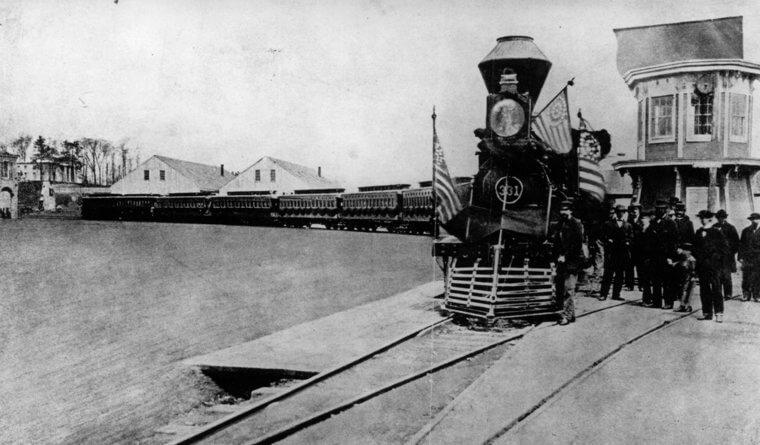
This photo was taken when the train arrived in Philadelphia. There, Lincoln’s body was laid out in his coffin in a very special location. Nearly 90 years prior to the day Lincoln arrived in Philadelphia, the Declaration of Independence was signed in the east wing of the Independence Hall, on August 2, 1776. And that’s exactly where mourners could say goodbye to Lincoln in 1865.
Lincoln’s coffin wasn’t the only one being transported to Springfield, IL. His son Willie’s remains were on the train as well. Willie had passed due to typhoid fever in the White House three years prior at the young age of eleven, during Lincoln’s second year in the office. His coffin was disinterred so that he could be buried next to his father.
It would eventually take the train two weeks to travel 1,654 miles and finally arrive at its destination on May 3, 1865. Due to the long journey, Lincoln’s body became discolored and had to be restored by an undertaker before the body could be laid out for local mourners who wanted to pay their final respects to their former leader.
The next day, May 4th, though President Lincoln was buried in his home town, the only two relatives who attended the actual funeral, his son Robert and his cousin John Hanks. His widow, Mrs. Lincoln mourned the death of her husband back in Washington, D.C., in the White House.
Lincoln’s coffin wasn’t the only one being transported to Springfield, IL. His son Willie’s remains were on the train as well. Willie had passed due to typhoid fever in the White House three years prior at the young age of eleven, during Lincoln’s second year in the office. His coffin was disinterred so that he could be buried next to his father.
It would eventually take the train two weeks to travel 1,654 miles and finally arrive at its destination on May 3, 1865. Due to the long journey, Lincoln’s body became discolored and had to be restored by an undertaker before the body could be laid out for local mourners who wanted to pay their final respects to their former leader.
The next day, May 4th, though President Lincoln was buried in his home town, the only two relatives who attended the actual funeral, his son Robert and his cousin John Hanks. His widow, Mrs. Lincoln mourned the death of her husband back in Washington, D.C., in the White House.
His Words Set In Stone
It is generally known that President Lincoln was adored by many American citizens during his time in office. So it’s not surprising that it was decided he should be honored with his own memorial. There was no better place than to build the memorial than in Washington, D.C., where he served in office, and in 1915 the first cornerstone was set. Seven years later, on the day of the official dedication of the memorial, May 30, 1922, over 50,000 people came to see the final result. One of those attendees was Lincoln’s only surviving son, Robert Todd Lincoln.
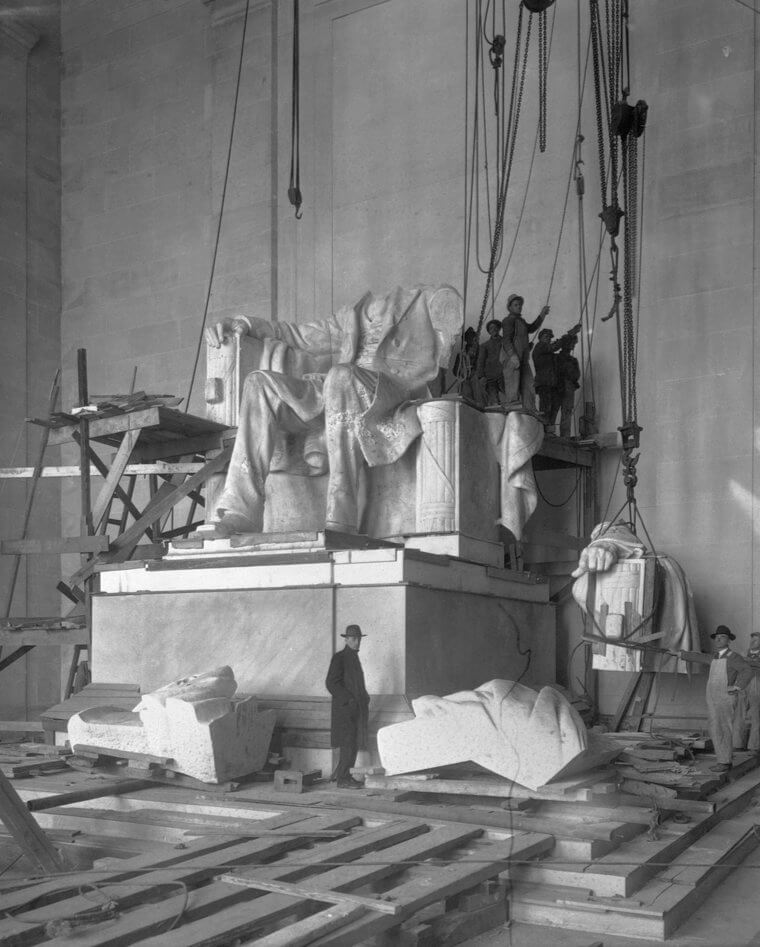
The Lincoln Memorial was designed by the American architect, Henry Bacon. It has 36 Colorado marble columns, which represent the number of states in the Union at the time of Lincoln’s death. The enormous seated statue of the President, which was designed by the American sculptor, Daniel Chester French, is nineteen feet high and made of Georgia white marble. It was assembled from 28 separate pieces which were mounted on a Tennessee marble pedestal, which you can see in the photo above.
The monument is situated on the Reflecting Pool, right across the Washington Monument, and near the Vietnam Veterans Memorial and the Korean War Veterans Memorial. It has several of Abraham Lincoln’s famous addresses inscribed on it walls; on the south wall, Lincoln’s Gettysburg Address is engraved, and on the north wall you can find his Second Inaugural Address.
On August 3, 1963, right from the memorial's steps, Martin Luther King Jr. delivered his famous “I Have A Dream” speech to a massive group of more than 200,000 civil rights marchers gathered around the monument. Lincoln played a huge part in the ending of slavery in the United States due to his Emancipation Proclamation in 1863. Lincoln saw slavery as a crucial issue and made it his goal to find a way to abolish it without dividing the country.
The monument is situated on the Reflecting Pool, right across the Washington Monument, and near the Vietnam Veterans Memorial and the Korean War Veterans Memorial. It has several of Abraham Lincoln’s famous addresses inscribed on it walls; on the south wall, Lincoln’s Gettysburg Address is engraved, and on the north wall you can find his Second Inaugural Address.
On August 3, 1963, right from the memorial's steps, Martin Luther King Jr. delivered his famous “I Have A Dream” speech to a massive group of more than 200,000 civil rights marchers gathered around the monument. Lincoln played a huge part in the ending of slavery in the United States due to his Emancipation Proclamation in 1863. Lincoln saw slavery as a crucial issue and made it his goal to find a way to abolish it without dividing the country.
Abraham Lincoln’s Birthplace
For over a century people thought there was a log cabin in Abraham Lincoln Birthplace National Park where the President was supposedly born. Lincoln was born on February 12, 1809, but the cabin in this photo--which was taken 120 years ago in 1900--can’t possibly be the actual house he was born in. Files show that this cabin wasn’t there yet at the time of Abe’s birth, and wouldn’t have been built until the 1840s when he would have been already in his 30s.
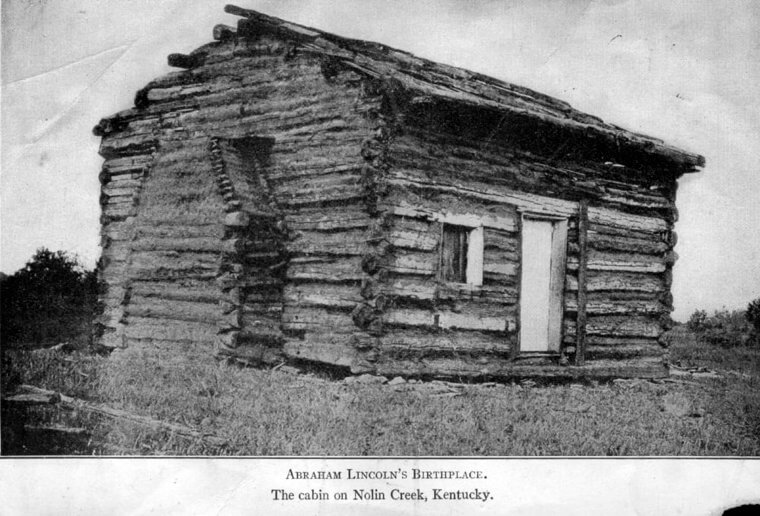
But let’s face it, even if this wasn't the place where Lincoln was born, he came from humble beginnings. The original cabin couldn’t have been much bigger than the one pictured above, which can still be visited today. It only had one room for the whole family to live in. By the time the ‘new’ cabin was built, Lincoln was probably living a much more comfortable life, because he was finishing up his time in the House of Representatives by then, plotting for the presidency that would change America forever.
Thomas Jefferson, 3rd Time's the Charm
As the third president of the United States and the author of the Declaration of Independence, there are few individuals in American history as remarkable as Thomas Jefferson. Known for his forward-thinking intelligence and moral ideals, Jefferson has many memorials throughout the country that have become popular tourist attractions. Along with Jefferson Memorial in Washington D.C., the most significant attraction is Jefferson's home in Virginia, which is where archaeologists discovered a secret room.

Any secret room is an exciting discovery, but the story of the room and its curious location in the house brought the intrigue to another level. This room revived a 200-year-old controversy that has been in the shadow of the president’s legacy and brought it back into the light.
Founding Father
Thomas Jefferson is one of America’s Founding Fathers, and his contributions to American history and government cannot be overstated. Drafting the Declaration of Independence secured his legacy, and he went on to become the third president. In 1803, he made the historic Louisiana Purchase which doubled the size of America.

In many ways, it is hard to imagine America as we know it without Jefferson’s contributions. Without him, the country may have even returned to the rule of a monarchy. While his legacy is well deserved, some aspects of his life, like many historical figures, are not easy to reckon with.
President, Plantation Owner
Every year, over 400,000 tourists visit Thomas Jefferson’s home at the Monticello Plantation outside of Charlottesville, Virginia, the state where Jefferson was governor. Having inherited five thousand acres of land from his father, Jefferson built Monticello, which is Italian for Little Mountain, in 1776. Jefferson occupied his home, which is depicted on the back of the nickel, until he moved to the White House in 1801.
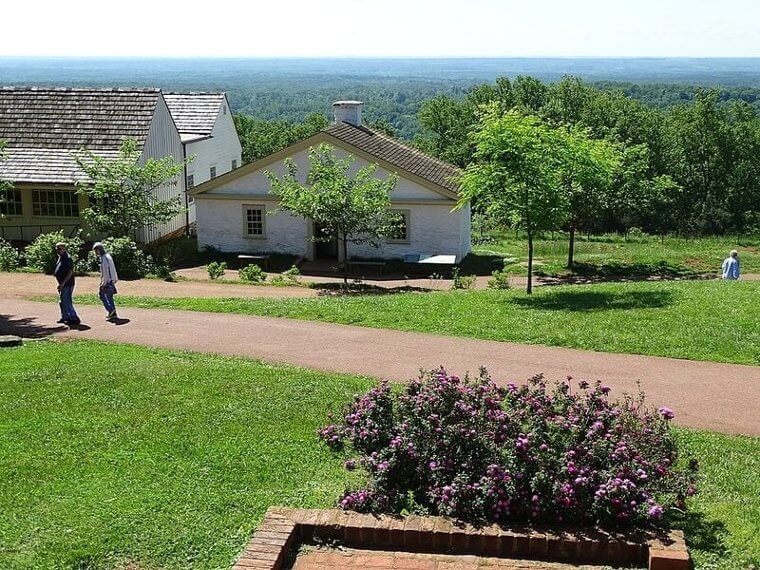
On the property was the plantation house where the owners lived, as well as the slave quarters. As was customary for a plantation owner at the time, Jefferson had hundreds of slaves who lived on the property. That Jefferson owned so many slaves is an uncomfortable fact of history, but the controversy does not end there. It has been rumored that there was one slave in particular to who Jefferson had taken a liking, and because of these rumors, the secret room was an especially alluring discovery.
The Hidden Room
Despite numerous restorations made at the Monticello Plantation over the years, the secret room managed to remain hidden until recently. A modern bathroom was put into place over the room in 1941 to accommodate visitors after the house was turned into a museum, and the room has been unknown and out of sight until recently.
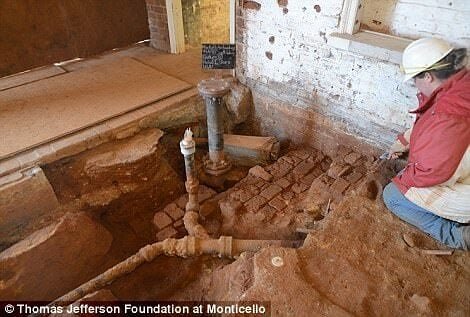
When the number of visitors to the museum increased in the 1960s, the bathroom was further renovated, but the secret room still went undiscovered by the new construction crews. It wasn’t until an old document was unearthed by historians that gave a clue that the Monticello Plantation may be holding a secret.
The Clue
While historians were doing research into Monticello Plantation’s original layout, they found a letter from Jefferson’s biographer describing a meeting he had with Thomas Jefferson Randolph, Jefferson’s grandson. Randolph mentions a room that was unknown to historians and modern visitors of the house.
The room was said to be in the plantation house’s south wing. Archaeologists were initially skeptical, as Randolph is often considered to be an unreliable source. However, this is an unlikely thing for him to lie about, and the addition of the restroom inspired the archeologists to investigate further, to discover what lies beneath.
Before Their Eyes
A 2017 restoration of Monticello saw archeologists conducting excavations at the plantation. With knowledge of the room that Jefferson’s grandson had referred to, they discovered evidence of the rumors surrounding Thomas Jefferson’s life for over two hundred years.
It took a team of historians and archeologists devoted to uncovering Monticello’s original layout to find a hidden room that was, surprisingly, not so hidden. In fact, it was right behind the bathroom which has received numerous renovations over the years.
Beneath The Bathroom Tiles
Despite repeated efforts to modernize the bathroom, a decision was made to knock it down in search of the secret room. It was then that the team finally discovered what was unknown for two hundred years. Sealed off from the world was a little room containing the answers to some big questions.
At around 15 by 13 feet, the room had no windows and featured a large brick oven in the center. The most interesting element of the room was its location. While the house was large and a room could have been placed anywhere, this room happened to be right down the hall from Thomas Jefferson’s bedroom.
The Scandal
The significance of the room takes us back centuries into American history. James T. Callender was a pamphleteer and journalist from Scotland who had a vendetta against Jefferson. Writing for a Richmond newspaper, he hoped to stir up a scandal by slandering Jefferson and attacking his character. Callender alleged that after Jefferson’s wife died, he entered into a relationship with another woman.
A widow starting over with someone new may not sound scandalous, but Callender’s claim was that Jefferson’s new affair was with one of his slaves. Callender said she was Jefferson’s “concubine” who had come to the plantation as a child.
Unmarried With Children
To add more fuel to the fire, Jefferson also allegedly fathered her children and kept it a secret, with his name kept off the birth records. Despite his efforts, word got out that there were children who shared a resemblance with the founding father.
The discovery of the room played right into Callender’s allegations. It is possible that this room is where Jefferson and his slave secretly met, and where his illegitimate children were conceived. A small room that Jefferson had easy access to is just the sort of place a secret relationship can blossom.
The Secret Spreads
It likely was not just muckraking journalists like Callender who knew about Jefferson’s secret relationship. In fact, Jefferson’s predecessor in the White House, John Adams, may have made a reference to it. In 1794, eight years before Callender published his allegations, Adams wrote a letter to his sons where he appears to mention that Jefferson, who was Adams’ vice president, was in a relationship with a slave. Historians have not reached a consensus on this, as Adams uses references to Roman mythology to discuss the issue, but it is a possibility that he knew Jefferson’s secret and was open to sharing it.
One particular line lends credibility to this theory. As Adams discusses Jefferson’s reasons for resigning as secretary of state, Adams writes that Jefferson may be “summoned from the familiar society of Egeria.” In the time of the Founding Fathers, “familiar” was a euphemism meaning “intimate,” and Egeria refers to a nymph in Roman myths who has secret meetings with a king. Jefferson’s affair was certainly ripe for innuendo.
The Mystery Girl
The slave whose affair sparked centuries of gossip was Sally Hemings. Starting her affair as a teenager, Sally Hemings was the half-sister of Jefferson’s wife Martha, a fact that did not grant her special treatment. While not much was known about Hemings, historians recently have discovered information on the life of the woman Jefferson met in his secret room at Monticello.
Sally Hemings was half white, half black, and like most African Americans at the time, her life was not easy. She was born into slavery and was brought to Monticello as a young girl where she was forced into household labor.
A Real Looker
It seems likely that Sally Hemings received preferential treatment because of her looks. Isaac Granger Jefferson, a blacksmith slaved owned by Jefferson, called Hemings “mighty near white” and “very handsome.” She was said to have long hair nearly down to her waist, and she worked as seamstress and chambermaid, which were less laborious jobs than other slaves had, allowing her to stay indoors. She carried on her work for the family until Jefferson died in 1826.
In Heming’s secret bedroom, historians discovered evidence that confirmed an old rumor. When Sally Hemings was 14 years old, she joined Thomas Jefferson on a trip to France. Her life would never be the same.
The French Connection
In 1784, shortly after his wife died, Jefferson made an official visit to France as minister to negotiate a treaty. When Jefferson’s daughter Maria came to Paris, Sally Hemings accompanied her, which was at odds with French law, where slavery was illegal. It is believed that Jefferson and Hemings's relationship began in France.
Given the legal circumstances, Hemings could have stayed in France. However, she made the choice to stay a slave owned by Jefferson and return to the United States. It is possible that she did not feel she had a real choice or found the idea of living on her own and starting a new life too daunting and beyond her means. It is also possible that something sparked between her and Jefferson, and returning to the United States was her real desire.
Return To Monticello
Historians are not sure when Hemings and Jefferson’s relationship began, and it is also debatable how consensual it was, given their vast differences in age and social status. What historians do know is that Sally Hemings became pregnant not long after the France trip.
Hemings and Jefferson both lived at Monticello for years, where Hemings had five more children whom Jefferson was most likely the father of. It is also believed that it was in the mystery room that the births took place.
A Rock And A Hard Place
Although Sally Hemings returned to America with Thomas Jefferson and likely fathered his children, it is difficult to determine whether or not their relationship was consensual. While it may be easy to say that if she were unhappy she could have stayed in France, it would be unrealistic to expect Hemings to have embraced her freedom in France even if she wanted to, as a young girl in a foreign country with no support system.
Also, the difference in power between the two parties is so vast, and the highly unequal world she was brought up in may make a relationship with Jefferson seem like her best option, regardless if it is what she wanted in her heart. She was given preferential treatment over other slaves and lived a relatively better life than most women born in her position. We can only speculate about her true feelings.
The Evidence Piles Up
The discovery of the secret bedroom makes a strong case towards proving their relationship, giving further evidence to what was suggested by Callender’s article and John Adams’ letter. Even more convincing, though, are the actions of Thomas Jefferson.
Jefferson had over 600 slaves that he owned on his plantation. However, very few of them were ever freed, and among those were Sally Hemings and her children when they became of age. In addition to their freedom, they received a stipend to help them start new lives after leaving Monticello. Whatever other evidence there is, and however she felt about him, Hemings was certainly close to Jefferson’s heart.
Freedom
Ironically, Jefferson was opposed to slavery. It is hypocritical to be against the institution of slavery and still own hundreds of slaves. Still, Jefferson had it in his heart to free Sally Hemings and her family.
Despite being granted her freedom, Hemings stayed at Monticello until Jefferson’s death. It is not clear if she wanted to stay or if she had an agreement with Jefferson. One way or another, Hemings and Jefferson had a relationship that greatly impacted them both.
Paternity Case
Historians know that Hemings had six children, one who died in childbirth, while living at Monticello. While they have been unable to confirm that Jefferson fathered all of them, it is a possibility that he has, given evidence of their relationship.
Probably because he wanted to hide the truth, Jefferson is not listed on the children’s birth records. Without a paper trail, it is hard to determine if he is their actual father. However, with the names of Sally Heming’s children, historians have made efforts into tracking down their descendants and tracing their genetic lineage, getting one step closer to understand the full nature of the relationship between Jefferson and Hemings.
The Descendants
With new DNA evidence, historians believe Thomas Jefferson was the father of all of Sally Hemings’ children. Though one child died during childbirth and another died very young, the link between Jefferson and Hemings was carried on in Harriet, Beverley, Madison, and Eston Hemings.
Having not come of age in Jefferson’s lifetime, Eston Hemings was granted freedom after Thomas Jefferson’s death. With his fair skin tone, being three-quarters white ancestry, Eston could pass as a white man and integrate into society. His life as a free man was a successful one, and he was married with three children. He even becomes known for his resemblance to his famous, deceased father.
Mirror Image
After getting his freedom and leaving Monticello, Eston went to Ohio where he inspired some curiosity. An article was published in the Ohio newspaper the Scioto Gazette with a detailed description of Eston. “Light bronze color, little over six feet tall…and dignified; his nearly straight hair showed a tint of auburn, and his face, indistinct suggestion of freckles.”
There were rumors that Eston was Thomas Jefferson’s son. One journalist made it his goal to uncover the truth, and he wanted to hear words straight from Eston’s mouth about the subject. An unknown man comes to Oklahoma looking like a former president. This was the hottest story in town.
Addressing The Rumors
Eston was well respected and known to be polite, with many townsmen holding him in high regard. When the journalist confronted Eston about his rumored parentage, Eston gave a response that the journalist was not expecting.
“Well, my mother, whose name I bear, belonged to Mr. Jefferson, and she never married.” Eston moved with his wife and children to Wisconsin, where they lived on a property they would come to own. Not known to him at the time, Eston was the key to solving the mystery of Jefferson and Heming’s relationship.
Forensic Evidence
There have been questions about Thomas Jefferson’s alleged affair for centuries, and thanks to modern technology, there are finally some answers. In 1998, a descendant of Eston Hemings was found, and scientists tested the DNA to determine if they were related to Thomas Jefferson.
The DNA tests finally gave some solid evidence. Eston was indeed related to Thomas Jefferson. Without more evidence, it is impossible to confirm, but it is highly probable that Jefferson in fact fathered all of Hemings’ children. The truth is beginning to take some shape.
Family History
When pathology professor Dr. Eugene A. Foster analyzed Eston’s descendant’s blood samples, he determined that “the Y chromosome of a descendant of Eston Hemings Jefferson made a perfect match to Jefferson’s…Thomas Jefferson was most definitely the father.”
While this news was of great interest to the world, the family was not surprised. The idea that they were descendants of Thomas Jefferson was passed down through the generations with stories of their family history. DNA evidence gave them confirmation, but there was never any actual doubt. However, there were some skeptics still waiting for more evidence.
Another Theory
The Thomas Jefferson Foundation was not moved by the DNA testing, and they suggested there must be an altogether different explanation for Jefferson’s DNA showing up in Hemings’ descendants. With a team of nine members, including four PhDs, the foundation started a research committee to prove its point.
After extensively reviewing the documents, the foundation put forth its theory. They claimed that Thomas Jefferson and Sally Hemings hardly knew each other at all and that he did not father her children. In a twist worthy of Jerry Springer, the foundation claims that it was Randolph Jefferson, brother of Thomas Jefferson, who fathered the children of Sally Hemings.
Two Sides To Every Story
The Thomas Jefferson Foundation says that Thomas Jefferson and Sally Hemings were rarely at Monticello at the same time and that he was absent during the times she would have been pregnant.
While their theory is plausible, they do not have much evidence to suggest that Randolph was the father, and the other side of the story just looks a whole lot stronger. When you look at the rumors and add the discovery of the bedroom and the letters from John Adams, it is hard to discount it for an entirely different explanation that lacks the same supporting evidence.
The Other Children
Historians have reached a consensus that Thomas Jefferson is likely the father of all of Sally Hemings’ children, including Harriet Hemings. Harriet was said to be beautiful like her mother. Despite her dark hair and eyes, she also had fair skin that allowed her to integrate into a white society, just as her brother did. In fact, the white man she married, who was said to be of “good standing,” never even knew that she was not fully white.
Madison Hemings was another of Sally Hemings’ sons. Unlike his siblings, he identified as black and did not try to live in a white society. He moved with his mom to Charlottesville, Virginia after Jefferson died, where he worked as a farmer and carpenter. With a wife and children, he moved to Ohio, a free state, following the death of his mother.

